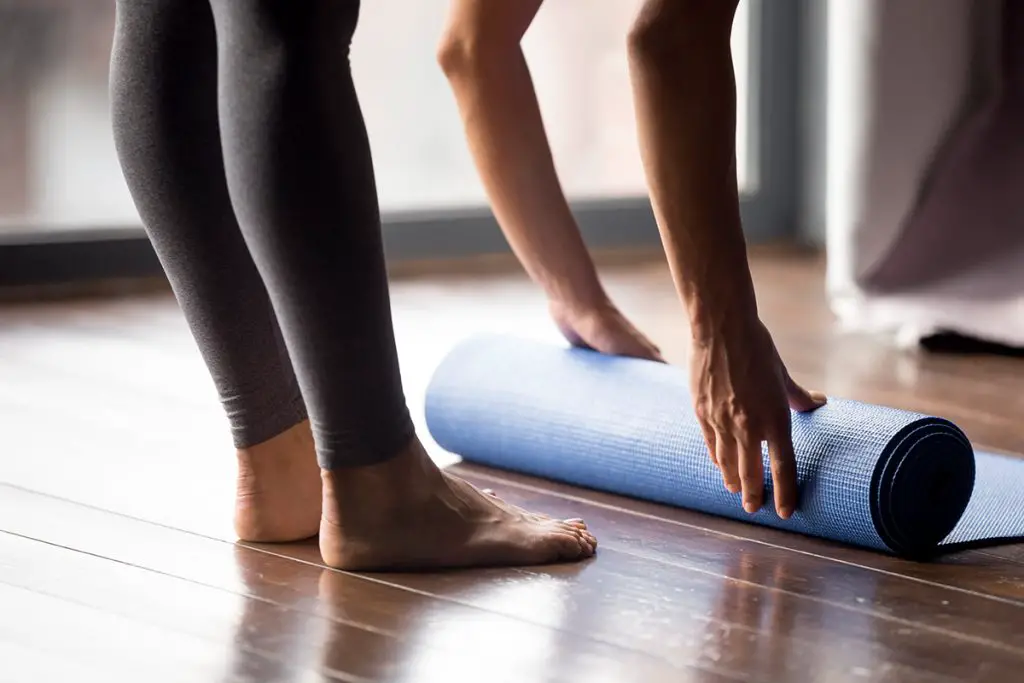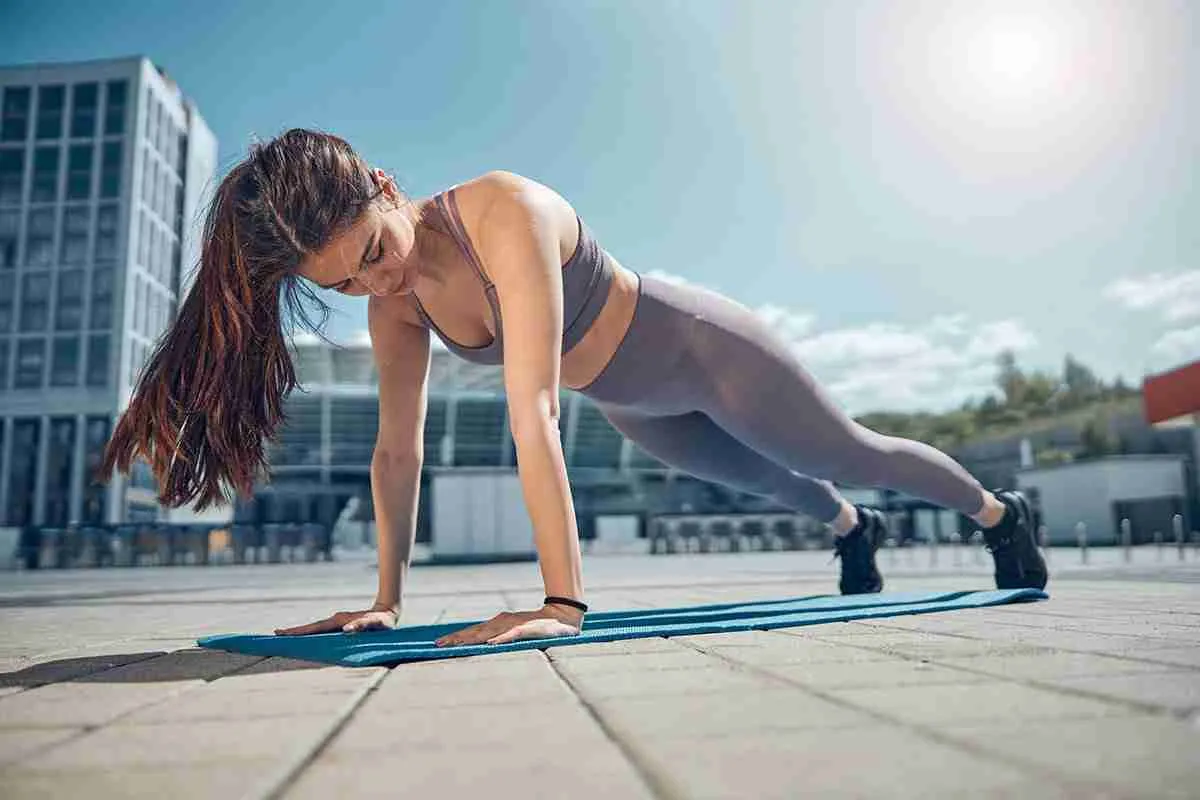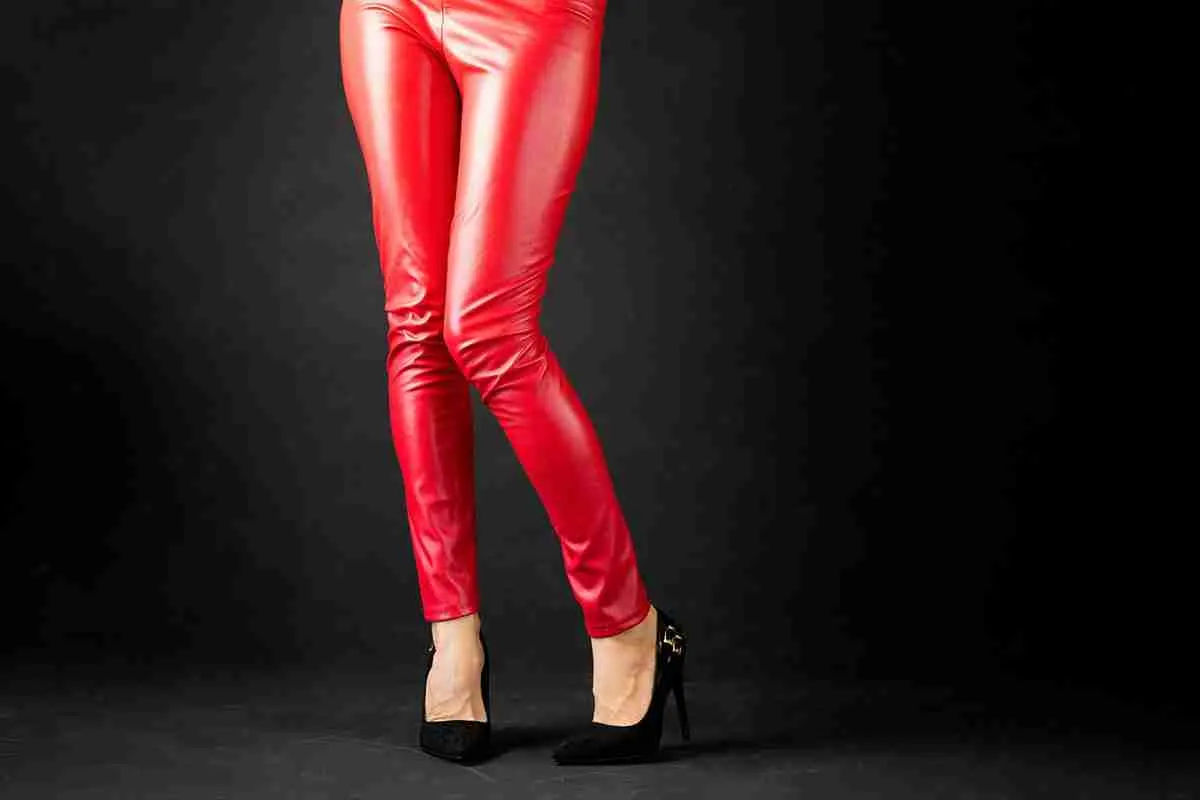Leggings don’t only come in various colors or styles but in different fabrics, too. The most popular options include polyester, nylon, cotton, and viscose. When shopping for leggings, you may wonder which of these fabrics is better for you, but to help you choose, you must first know their differences.
Polyester, nylon, cotton, and viscose offer different fabric qualities. All are sturdy, though polyester and nylon are more wear resistant than cotton and viscose. All are comfy to wear, with cotton and viscose being more breathable. For UV protection, the best choices are polyester and nylon.
Below, you’ll find a complete picture of these differences.
Leggings Fabrics Compared
Leggings are often made with four fabrics: polyester and nylon, which are synthetic, and cotton and viscose, which come from natural sources.
Unless you’re a seasoned wearer, you may not be able to distinguish which is which. Well, I’ve made the process of comparing easier for you. Below, you’ll find a table that summarizes the differences between the four fabrics:
| Characteristics | Polyester | Nylon | Cotton | Viscose |
| Other names | Polyethylene Naphthalate | Polyamide | Cellulose | Rayon, Modal, Lyocell, Lenzing, Tencel |
| Manufacturing process | Chemical solution spun into thread | Liquid later turned and dried into individual fibers | Spinning (raw cotton spun to thread) or weaving (thread woven to fabric) | Washed, cleaned, and bleached wood pulp treated with carbon disulfide; later dissolved in sodium hydroxide |
| Wearability | Wrinkle-resistant, low moisture absorbency | Wrinkle-resistant, low moisture absorbency | Wrinkle-resistant if treated, quickly absorbs moisture | Only the rayon type is wrinkle-resistant, absorbs moisture |
| Durability | Strong, abrasion-resistant, stretch and shrink resistant, crisp and resilient whether wet or dry, resistant to oil and most chemicals | Stronger than polyester, abrasion resistant, oil or chemical damage resistant | Strong (30% stronger when wet,) abrasion-resistant, withstands washing in hot water | Strong and long-lasting, offers some abrasion, chemical, and weather resistance |
| Comfort | Smooth, quick-drying, lightweight, stretchy, warm | Smooth, quick-drying, lightweight, stretchy, warm, soft | Soft, lightweight, breathable, stays warm even when wet, some stretch | Smooth, lightweight, breathable |
| UV resistance | High (about UPF 30) | Moderate | Low (equivalent to UPF 5) | Low |
| Cleaning | Easy to wash, mildew-resistant, May be ironed and dry cleaned, may be dried on low heat but must be removed before the cycle finishes | Easy to wash, mildew resistant, May be ironed but not dry cleaned, May be dried on low heat but must be removed before the cycle finishes | Best hand-washed in cold water with mild detergent, May be ironed, May be dried in warm temperature setting | Best hand-washed with cold or lukewarm water, May be ironed on reverse while still wet, Best air-dried |
The following discusses the key characteristics of each of these fabrics.
Polyester and Nylon Are Easy To Wear
If you wear leggings wherever you go, you need to find a wearable pair (or two.) Wearability refers to the legging’s ability to withstand prolonged and repeated wear. Wrinkle resistance and quick-drying properties are just some of the things you need to look for in your leggings.
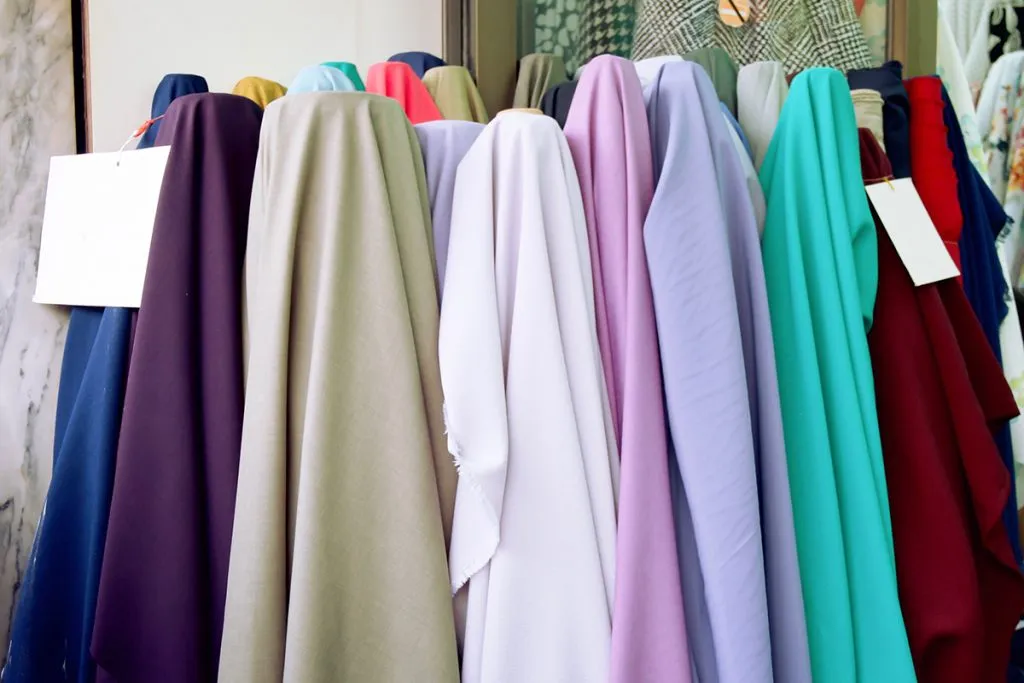
Polyester and Nylon Are Wrinkle-Resistant
If you’re looking for wash-and-wear clothing, then your best choices are synthetic fibers such as polyester and nylon. They’re wrinkle-resistant, thanks to their glass transition temperature. In other words, their polymer structures remain crystalline below a specific temperature or fluid/ glassy above a certain temperature. Because of this, heat or water cannot affect or wrinkle the fabric.
If you prefer natural fabrics, the best option is treated cotton. As the name suggests, they’re bathed in chemicals that make them wrinkle-resistant.
Polyester and Nylon Are Best for Workouts Since They Dry Quickly
If you use your leggings for workouts, then you’re best off synthetic fabrics such as polyester and nylon. These fabrics have low moisture absorbency, mainly because they’re made of materials similar to plastic. That means they’ll dry off quickly, even after intense sweating.
Cotton and viscose can easily wick moisture as well. You won’t feel wet, although these fabrics won’t dry as quickly as the synthetic ones.
Polyester, Nylon, Cotton, and Viscose Are All Durable
Although leggings may not be as thick as, say, the usual jeans and trousers, they’re very durable.
Select materials can resist anything thrown at them, be it an abrasive chemical or a hard-to-remove oil. Some remain strong – even when they’re drenched in sweat or moisture!
Polyester Stays Strong in Dry or Wet Conditions
All four fabrics are used to make leggings mainly because they’re strong. Cotton is 30% stronger when wet. That’s because cotton has a higher degree of crystallinity, which means the moisture keeps the fibers closely packed together. On the other hand, polyester remains durable, whether wet or dry.
Nylon and Polyester Are Strong Against Harsh Conditions
The following discusses how all four fabrics compare to each other when it comes to abrasion, chemical, oil, and the weather:
- Abrasion: All are resistant to abrasion. However, synthetic fabrics offer the best protection compared to cotton and viscose.
- Chemical: Polyester and nylon work best against chemicals that may destroy the fabric.
- Oil: Again, synthetic fibers take the lead in oil protection. Since cotton and viscose readily absorb moisture, they can easily pick up oils.
- Weather: Harsh weather conditions are no match to synthetic fabrics. Nylon and polyester can resist high temperatures, which is why they offer the best UV protection. Cotton and viscose provide little protection from the sun and rain because these fabrics quickly absorb water.
Polyester, Nylon, Cotton, and Viscose Are All Comfortable To Wear
Comfort is one of the main reasons why women love leggings. They provide an ample amount of support and warmth. Unlike jeans, they’re not too heavy or restrictive. These benefits, of course, are made possible by the fabrics used – namely polyester, nylon, cotton, and viscose.
Cotton Is the Least Smooth Fabric for Leggings
Polyester, nylon, and viscose are smooth materials. Cotton is often rougher, mainly because of the air spaces between the threads. That said, you may find smoother cotton leggings, dependent on their staple thread length.
Cotton and Viscose Are Lightweight and Highly Breathable
All fabrics are lightweight, making them perfect candidates for leggings. After all, it’s harder to work out in thick, bundled clothing. Breathability-wise, the best options are the natural fibers of cotton and viscose. Both have absorbent properties that help wick moisture away from the body.
Nylon and Polyester Do Well During Colder Days
Leggings can serve as a great lightweight layer during colder days. If you’re thinking of bundling up with your leggings, you’re better off with polyester or nylon. As for the two natural fibers, this is the part where they differ in performance. The former loses in the viscose leggings vs. cotton leggings debate regarding warmth.
Cotton can keep you warm, granted it doesn’t get wet in the process. Airy viscose can’t provide much warmth, so many people can’t help but ask: is viscose good for leggings? The answer is yes, though they’re best worn during the hotter days.
Nylon and Polyester Dry Quicker Than Cotton and Viscose
Synthetic fabrics such as polyester and nylon dry quicker than cotton and viscose because they don’t absorb moisture. The opposite can be said with cotton and viscose, which takes some drying time. For example, the air-drying times of cotton leggings vs. nylon leggings are 3 hours and 1–2 hours, respectively.
Polyester Offers the Best UV Protection
Wearing UV-resistant material can help reduce the effects of sun damage—and the risk of skin cancer as well. When it comes to UV protection, polyester serves as your best’ shield.’ It has a high protective capacity of SPF 30.
Nylon is also a good candidate, though it only offers a moderate degree of protection compared to polyester. Sadly, cotton and viscose offer the least protection—only an equivalent of SPF 5, at the very most.
Polyester and Nylon Are the Easiest To Wash
When it comes to washing and wearing, polyester and nylon leggings are the way to go. They’re easy to wash compared to cotton or viscose. That said, all these fabrics are best washed in cold water since hot water may damage the fibers.
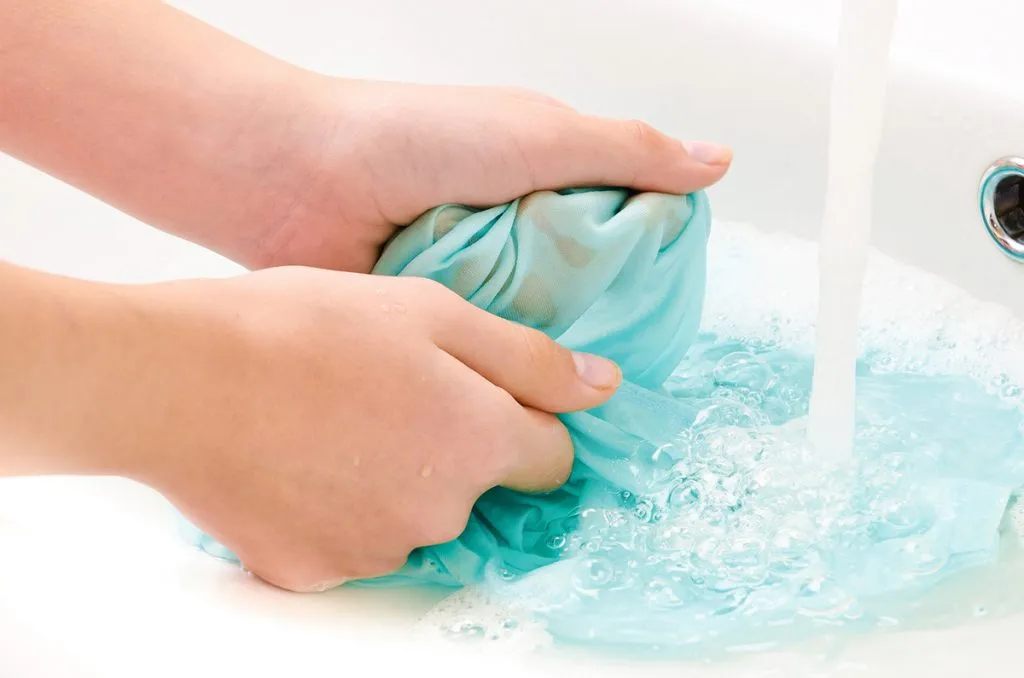
Except for nylon, the three other fabrics may be dry-cleaned as you wish, though this process is unnecessary. As mentioned, heat can destroy the fabrics. As such, synthetic materials should be dried on low heat, though they should be removed before the cycle finishes.
Cotton and viscose may be air-dried, though the former can be dried in a warm-temperature setting as well. All of these fabrics may be ironed, but it’s best to do so while your cotton leggings are still wet. As for viscose leggings, they’re best ironed on the reverse side.
The Verdict
As you see, the differences between the four fabrics will help you choose the suitable leggings for your needs. In terms of wearability, all absorb/wick moisture. However, synthetic fibers dry faster.
Durability-wise, polyester and nylon offer better resistance. When it comes to comfort, natural fibers are more breathable. That said, viscose can’t provide much warmth compared to other fabrics.
As for UV resistance, polyester offers the highest protection, followed by nylon, cotton, and viscose.
So which is the best fabric to pick? Well, polyester leggings dominate in terms of wearability, durability, comfort, and UV resistance.
What To Read Next:
